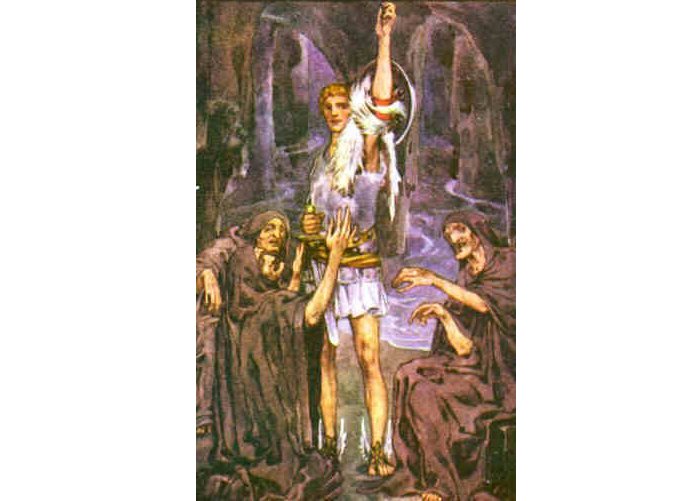Graeae: Three Sisters Of Fate Who Shared One Eye And Tooth In Greek Mythology
A. Sutherland - AncientPages.com - The Graeae were three sisters of fate who shared one eye and one tooth in Greek mythology. They were born as old women and their names were Deino (dread), Enyo (horror), and Pemphredo (alarm).
The number three is of great symbolical meaning in many myths. The Graeae share certain similarities with the three Norns, known as ‘Shapers of Destiny’ in Norse mythology. The Norns were goddesses who ruled the fates of people, determined the destinies and lifespans of individuals.
One might also compare the Graeae with the three spinners of Destiny, the Moirai who were also called the Fates in Greek mythology. The three Moirai determined the span of life of every mortal from birth to death. They were so powerful that no god had the right or the means to alter their decisions.
Although the Fates were the personifications of destiny, no human could blame the fates, as he was the only one responsible for his failures.
The Graeae were three sisters of fate who shared one eye and one tooth in Greek mythology. Image credit: Doorway To Other Worlds
The subject of fate is also reflected in Baltic religion where we encounter Laima, the Baltic goddess of fate who together with Dievs, the sky, and Saule, the sun, Laima determines the length and fortune of human life.
The mythical story of the Graeae has changed over the course of time. In their original conception, they were merely personifications of kindly and venerable old age, possessing all its benevolent attributes without its natural infirmities.
They were old and gray from their birth, and so they ever remained. In later times, however, they came to be regarded as misshapen females, decrepit, and hideously ugly, having only one eye, one tooth, and one gray wig between them, which they lent to each other when one of them wished to appear before the world. So, at times poets described them as "beautiful."
In other legends they are described as being half-swan or old, ugly hags. Their age was so great that a human childhood for them was hardly conceivable.
Born as the daughters of the Sea Gods, sea gods Phorcys and Ceto, and sisters of the Gorgons, the Graeae were powerful creatures and they appear in the myth of Perseus, the hero who killed Medusa, a monster, a Gorgon, generally described as a winged human female with a hideous face and living venomous snakes in place of hair. Gazers on her face would turn to stone.
Perseus Returning the Eye of the Graeae by Henry Fuseli
According to an ancient legend, Perseus was sent by the king to get Medusa's head. Perseus went to the three Graeae, that shared one eye between them, and through stealing it he made them tell him where the nymphs of the north lived. They gave him winged sandals, a magic bag that fit anything put in it, and Hades' cap which made him invisible whenever he wore it. Hermes gave him an unbreakable sword, and Athena a shield.
Perseus took the eye from the Graeae to kill Medusa.
With all this equipment, Perseus managed to kill Medusa by looking at her through the reflection of the shield and escaped her sisters by wearing the cap. His winged sandals flew him home. Later he offered Medusa's head to Athena.
The Graeae are also called Grey Sisters, Graiai, and Graiae.
Written by – A. Sutherland AncientPages.com Staff Writer
Copyright © AncientPages.com All rights reserved. This material may not be published, broadcast, rewritten or redistributed in whole or part without the express written permission of AncientPages.com
Expand for referencesEdith Hamilton, Mythology: Timeless Tales of Gods and Heroes
Bernard Evslin, Heroes, Gods and Monsters of the Greek Myths
More From Ancient Pages
-
 Sacred Number One: Very Powerful Symbol Equated With The Mystic Center
Ancient Symbols | Oct 2, 2019
Sacred Number One: Very Powerful Symbol Equated With The Mystic Center
Ancient Symbols | Oct 2, 2019 -
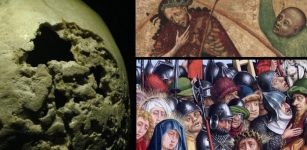 Manuscripts And Art Support Evidence That Syphilis Was In Europe Long Before Explorers Could Have Brought It Home
Featured Stories | Jul 15, 2022
Manuscripts And Art Support Evidence That Syphilis Was In Europe Long Before Explorers Could Have Brought It Home
Featured Stories | Jul 15, 2022 -
 On This Day In History: Famous American Author Edgar Allan Poe Found Dying – On Oct 3, 1849
News | Oct 3, 2016
On This Day In History: Famous American Author Edgar Allan Poe Found Dying – On Oct 3, 1849
News | Oct 3, 2016 -
 Ancient Secrets Of The Masters Of Mu – Myths And Legends Examined – Part 1
Ancient Mysteries | Aug 24, 2018
Ancient Secrets Of The Masters Of Mu – Myths And Legends Examined – Part 1
Ancient Mysteries | Aug 24, 2018 -
 Vodyanoi: Evil Water Spirit In Ancient Beliefs Of The Slavs
Featured Stories | May 23, 2019
Vodyanoi: Evil Water Spirit In Ancient Beliefs Of The Slavs
Featured Stories | May 23, 2019 -
 Unique Steelyard Discovery Sheds Light On Life At Milecastle 46
Archaeology | Aug 4, 2023
Unique Steelyard Discovery Sheds Light On Life At Milecastle 46
Archaeology | Aug 4, 2023 -
 Egyptian ‘Golden Boy’ Mummy Was Protected By 49 Precious Amulets On His Journey To The Afterlife – CT Scans Reveal
Archaeology | Jan 24, 2023
Egyptian ‘Golden Boy’ Mummy Was Protected By 49 Precious Amulets On His Journey To The Afterlife – CT Scans Reveal
Archaeology | Jan 24, 2023 -
 Ancient Cities Built By Biblical Giants – Archaeological Evidence
Ancient Mysteries | Jun 2, 2018
Ancient Cities Built By Biblical Giants – Archaeological Evidence
Ancient Mysteries | Jun 2, 2018 -
 Sweden’s Blue Maiden ‘Blåkulla’ Island – Mythical Place With Dark Secrets Of Witches And Wizardry
Places | Sep 23, 2015
Sweden’s Blue Maiden ‘Blåkulla’ Island – Mythical Place With Dark Secrets Of Witches And Wizardry
Places | Sep 23, 2015 -
 Ancient DNA Reveals The World’s Oldest Family Tree
Archaeology | Dec 27, 2021
Ancient DNA Reveals The World’s Oldest Family Tree
Archaeology | Dec 27, 2021 -
 People Of India In Focus: Where Did They Come From?
Civilizations | May 11, 2017
People Of India In Focus: Where Did They Come From?
Civilizations | May 11, 2017 -
 Earliest Systematic Coal Exploitation For Fuel Goes Back To ~3600 B.P.
Archaeoastronomy | Aug 2, 2023
Earliest Systematic Coal Exploitation For Fuel Goes Back To ~3600 B.P.
Archaeoastronomy | Aug 2, 2023 -
 Amazing Ancient Underwater Treasures And Temples Discovered At Thonis-Heracleion
Archaeology | Sep 20, 2023
Amazing Ancient Underwater Treasures And Temples Discovered At Thonis-Heracleion
Archaeology | Sep 20, 2023 -
 Mystery Of The Large Ancient Boulders In Ireland And Britain – Possible Connection To The City Of Troy?
Featured Stories | Oct 17, 2023
Mystery Of The Large Ancient Boulders In Ireland And Britain – Possible Connection To The City Of Troy?
Featured Stories | Oct 17, 2023 -
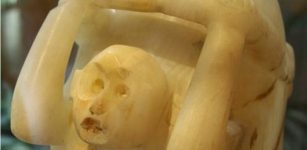 Pulque: Ancient Drink Of The Gods Is Popular Again But It Has Odd Side-Effects
Ancient Traditions And Customs | Jun 29, 2017
Pulque: Ancient Drink Of The Gods Is Popular Again But It Has Odd Side-Effects
Ancient Traditions And Customs | Jun 29, 2017 -
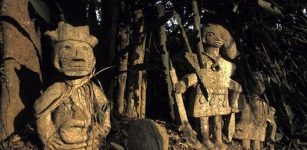 Mystery Of Sacred Groves Of Oshogbo And Its Remarkable Ancient Figures
Featured Stories | Nov 25, 2023
Mystery Of Sacred Groves Of Oshogbo And Its Remarkable Ancient Figures
Featured Stories | Nov 25, 2023 -
 Viking Children Were Buried With Extremely Sharp Knives – Afterlife Tools To Be Used In Valhalla?
Ancient History Facts | Nov 29, 2017
Viking Children Were Buried With Extremely Sharp Knives – Afterlife Tools To Be Used In Valhalla?
Ancient History Facts | Nov 29, 2017 -
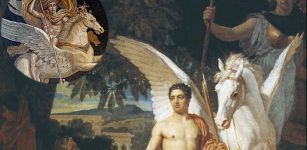 Bellerophon: Great Hero Of Homer’s Iliad Who Was Punished By Gods For His Pride And Arrogance
Featured Stories | Jul 13, 2021
Bellerophon: Great Hero Of Homer’s Iliad Who Was Punished By Gods For His Pride And Arrogance
Featured Stories | Jul 13, 2021 -
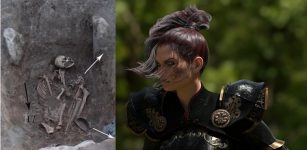 Grave Of Amazon Warrior Who Lived In The Kingdom Of Urartu Discovered In Armenia
Archaeology | Nov 28, 2019
Grave Of Amazon Warrior Who Lived In The Kingdom Of Urartu Discovered In Armenia
Archaeology | Nov 28, 2019 -
 Rare Bronze Hand Found At Roman Vindolanda
Archaeology | Jul 11, 2023
Rare Bronze Hand Found At Roman Vindolanda
Archaeology | Jul 11, 2023



